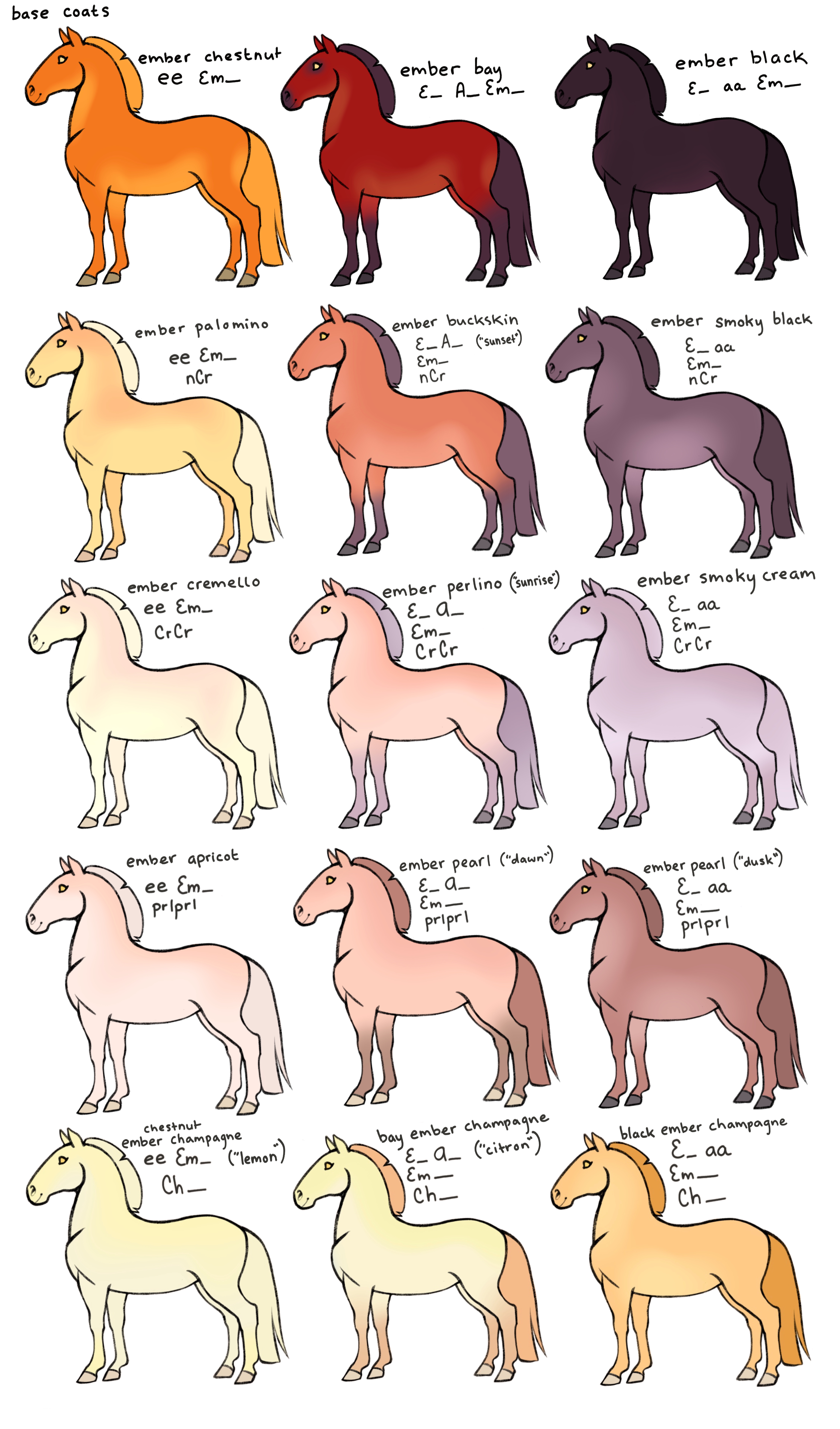Traits
(Z_) silver (Natural)
Name: Silver
Base Genotype: Z_
Skin Color: Dark
Eyes: Brown
Description: Silver impacts black pigment, pushing it towards grey or white. As such, chestnut horses can carry silver, but will never show it since they do not make black pigment. Silver is a dominant gene, so it requires only one copy to be visible on bay and black horses.
Design Guidance:
Horses will have greying of the mane and tail at minimum. Bay horses can have greying legs in addition to the mane and tail if desired. Black horses can optionally have strong grey dapples and greying legs or neither.
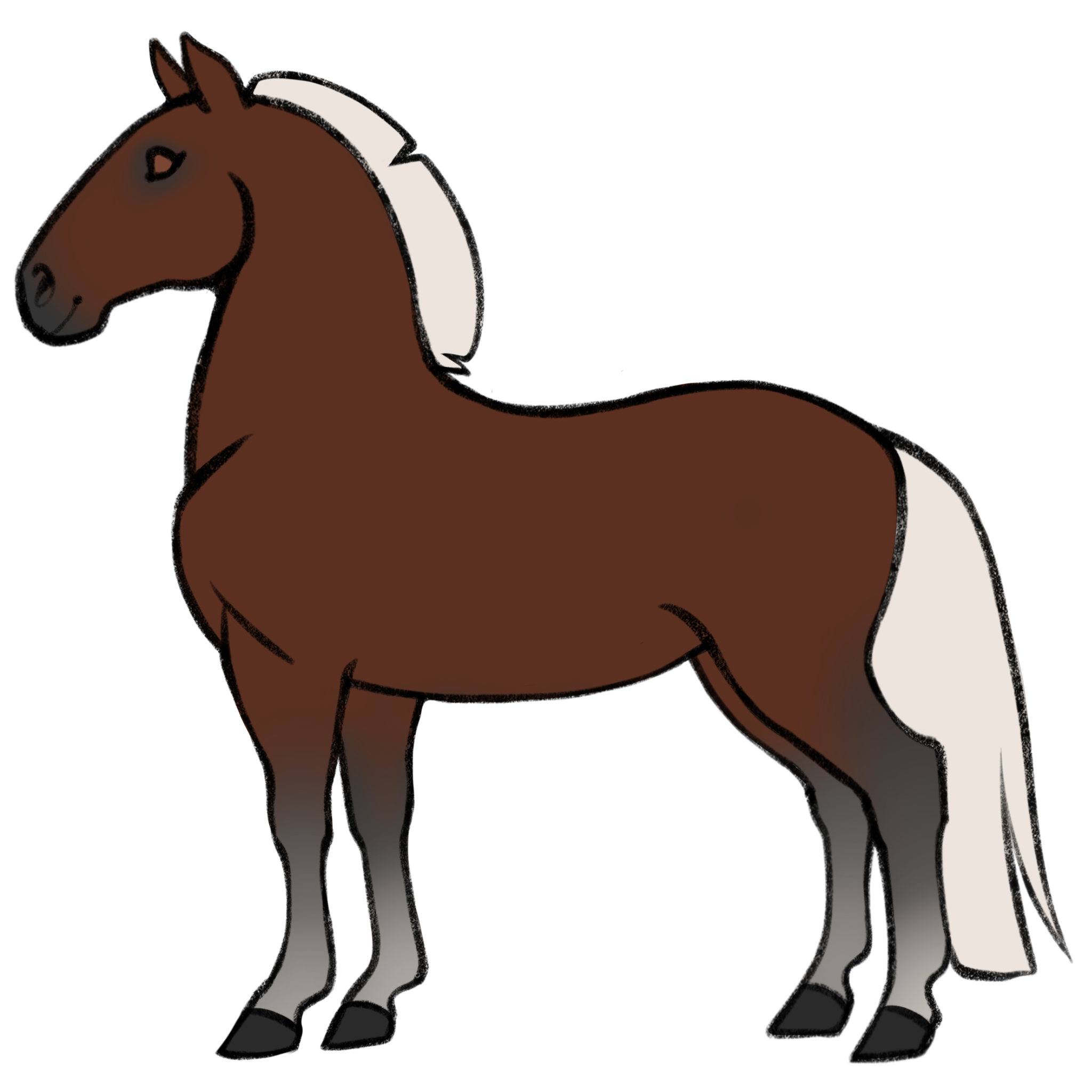
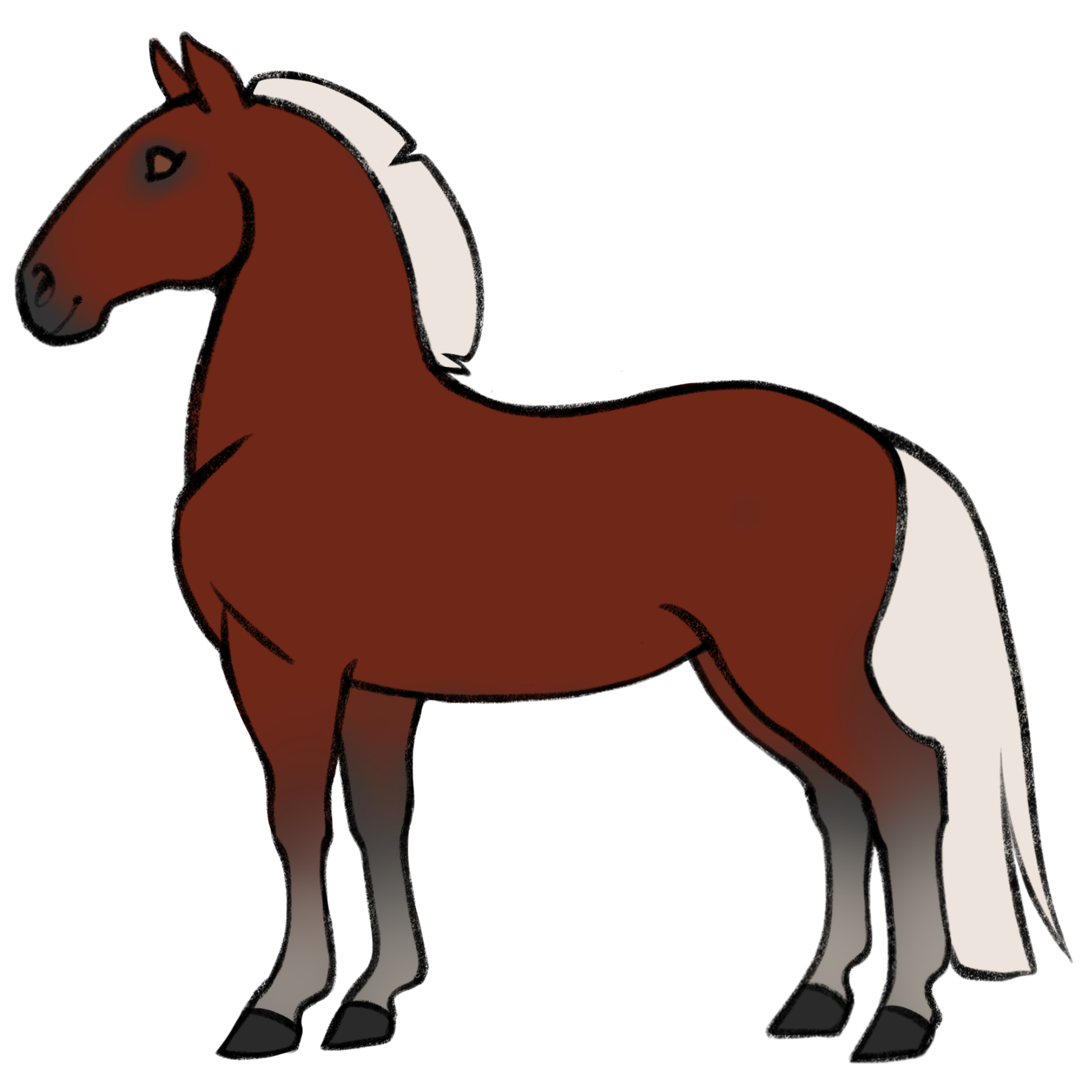

(ff) flaxen (Natural)
Name: Flaxen
Base Genotype: ff
Skin Color: Light
Eyes: Brown
Description: Flaxen affects chestnut horses only and causes the mane and tail to lighten to a bright gold, blonde, or light cream color. Flaxen is recessive, meaning that it will show only if the horse has two "little f's" - two recessive copies. If the horse has (Ff) then they will be a Flaxen carrier. Bay and Black horses can also carry or have hidden flaxen.
Design Guidance:
Horses will have a slightly lighter mane and tail at minimum. At the most maximal, their mane and tail would be off-white cream in color, but not pure white. (Must be warm toned.) Liver chestnut horses can also have very contrasting mane and tail, such as the example below.


(STY_) sooty (Natural)
Name: Sooty
Base Genotype: STY_
Skin Color: Dark
Eyes: Brown
Description: Sooty affects all base coats and darkens the coat starting along the back and topline. Sooty has a wide range of expression and may range from barely being noticable at all, to covering a large portion of the body and causing strong dappling on the horses neck, shoulders, and sides. Even on lighter coats like champagne or cream, some darkening of the coat will occur. On bay horses, the sooty areas tend to be black. On black horses, sooty is not able to be seen.
Design Guidance: Sooty should be a blended out gradient without hard edges, with the strongest darkening being along the horse's topline. At minimum, sooty can very slightly darken the spine of the horse. At maximum, the sooty can darken the entire body of the horse and blend out down the legs. Sooty does not make horses solid black, or solidly darkened- it should be a gradient. Sooty does not have any impact on white markings such as tobiano or sabino, as sooty occurs below these markings. Sooty dapples are optional.

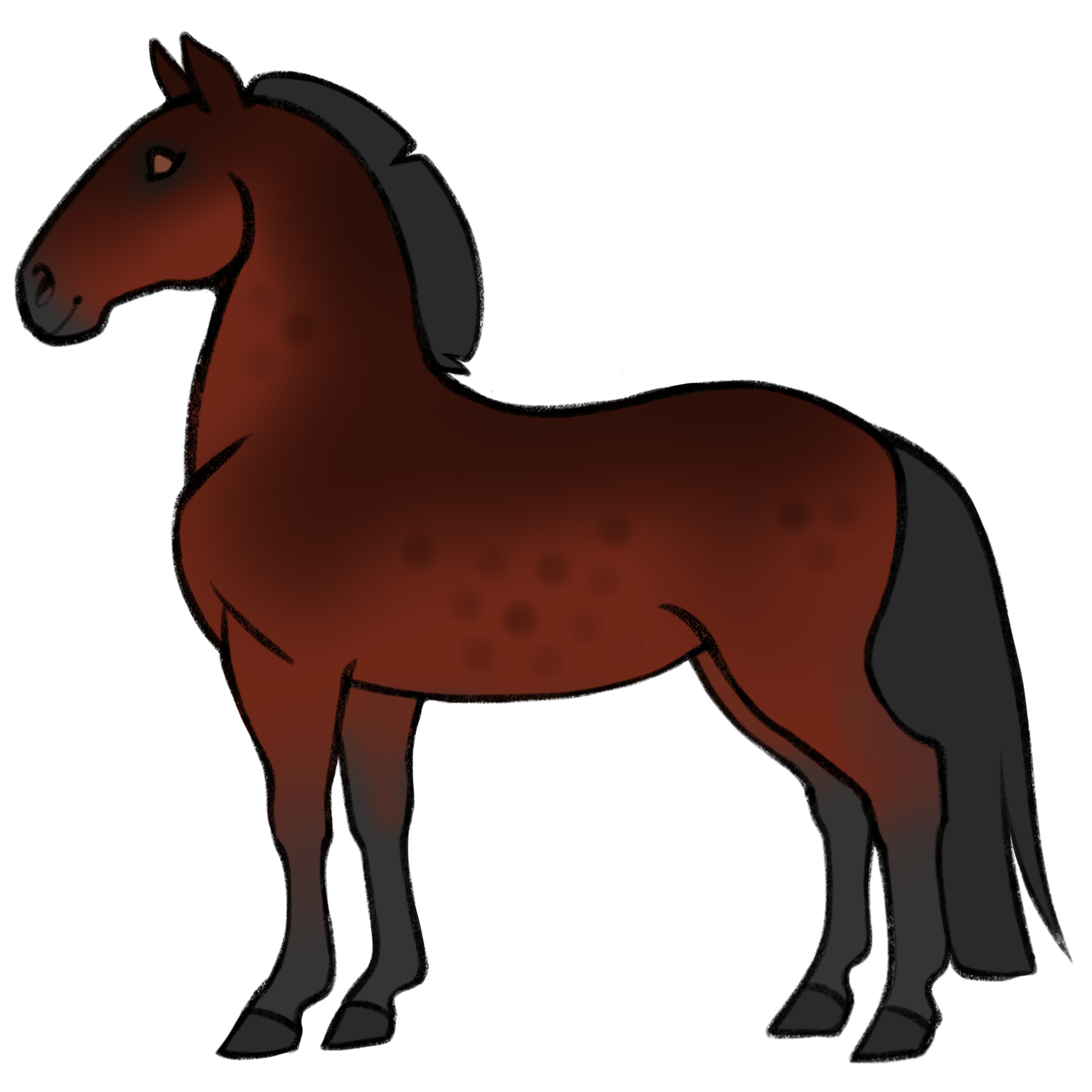
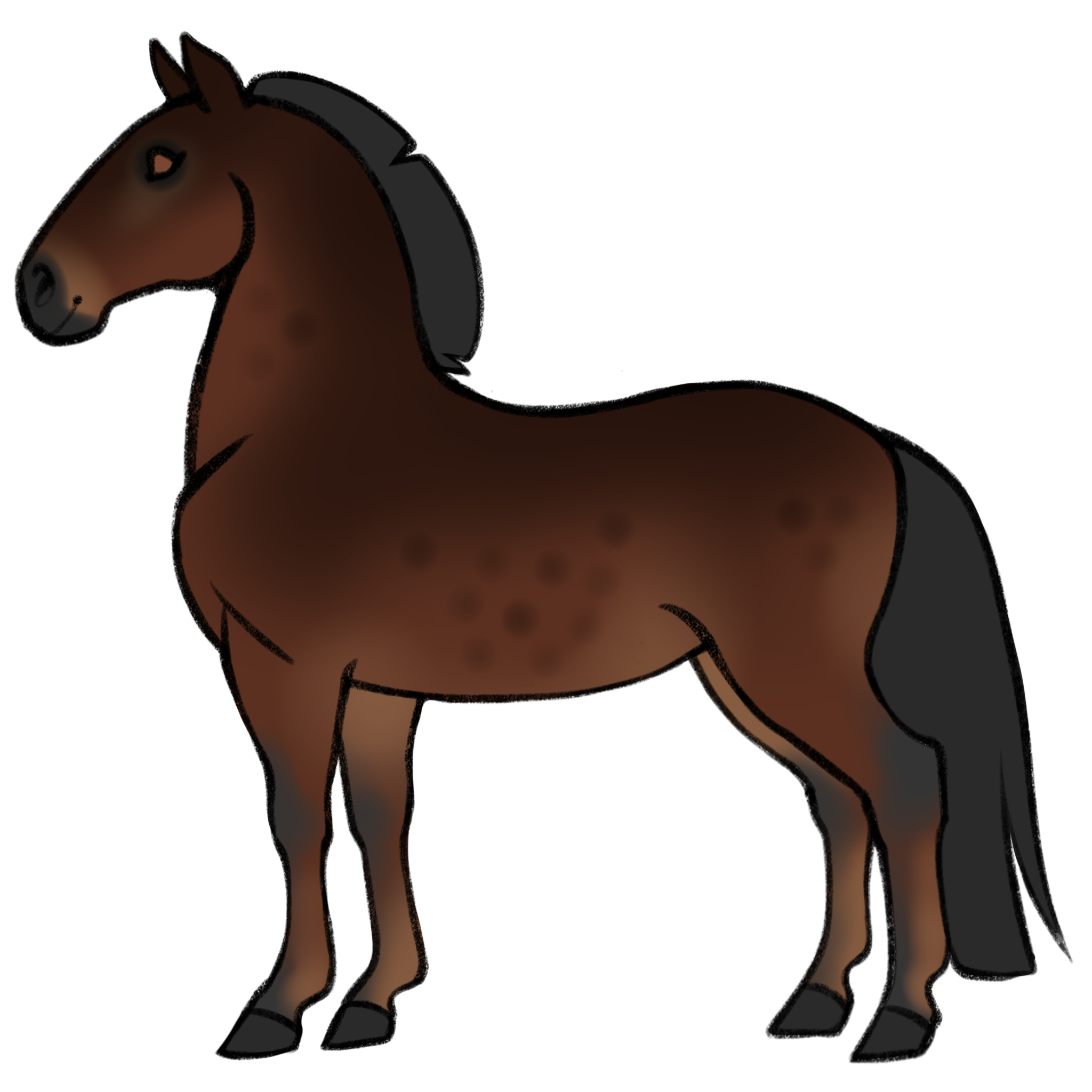
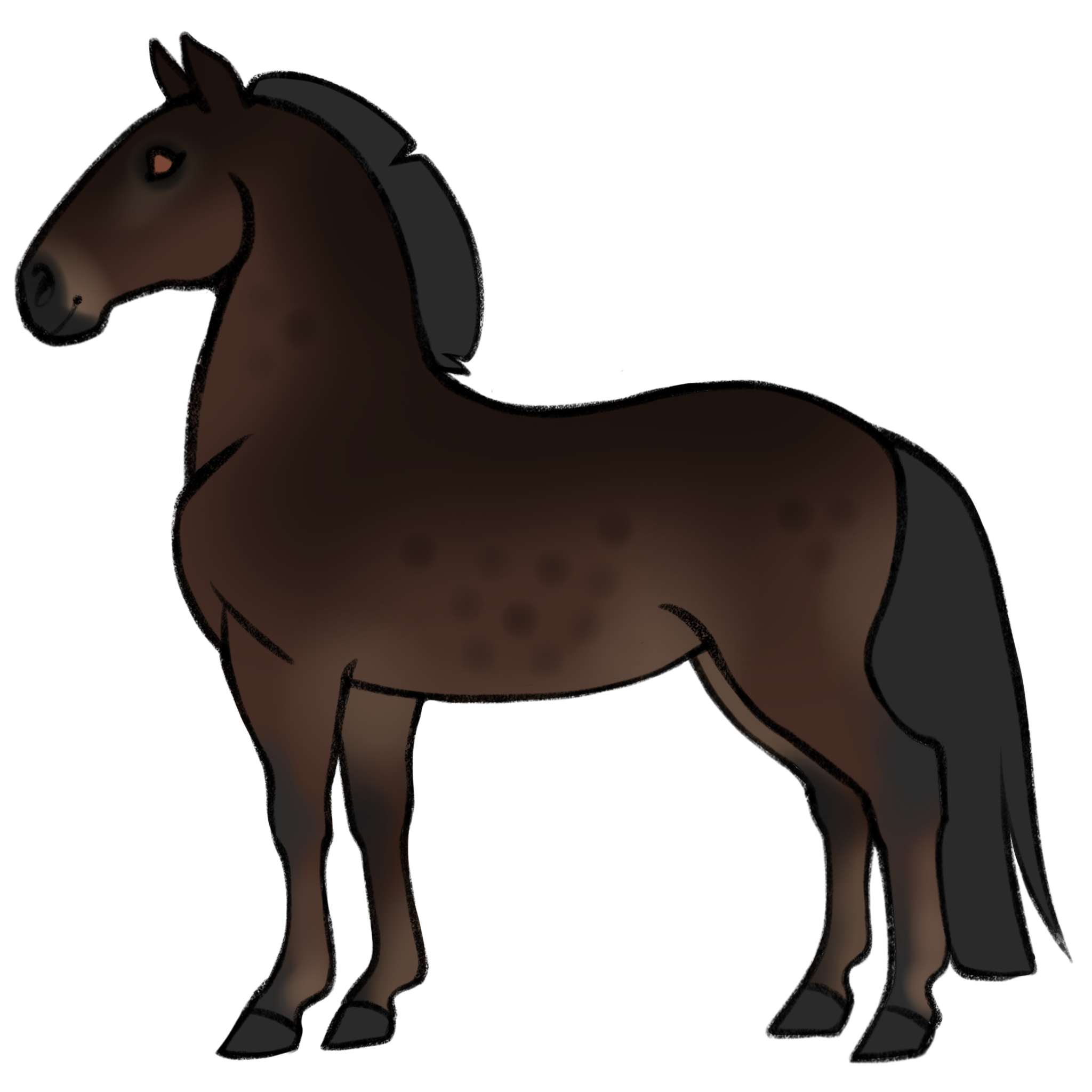
On light diluted coats, be sure to only darken the coat, rather than using black to blacken it. Here we have a sooty pearl horse where the pearl coat is darkened by sooty:

(PNG_) pangaré (Natural)
Name: Pangaré
Base Genotype: PNG_
Skin Color: No Effect
Eyes: No Effect
Description: Pangaré is a type of countershading that is visible on all base coats except black. That is to say, pangaré lightens any red-based hairs on the underside of the horse, most noticeably where the skin is thinnest. Sometimes Pangaré Bay horses are referred to as being "Mealy Bay." Pangaré is a dominant gene, so only one copy is needed for it to show.
Design Guidance: Pangaré at minimum will slightly lighten the muzzle and armpits of the horse. At maximum, the muzzle, eyes, insides of the legs, and the undersides of the neck, barrel, and flank are all lightened. Pangaré is a lightening of the existing base coat, but can introduce warm tones. Pangaré and Sooty together on the same horse usually causes dramatic shading and dappling. In the real world, Pangaré is most commonly found in Prezwalski's horses, draft horses, mules, and primitive horse breeds. These can all be good sources of reference.
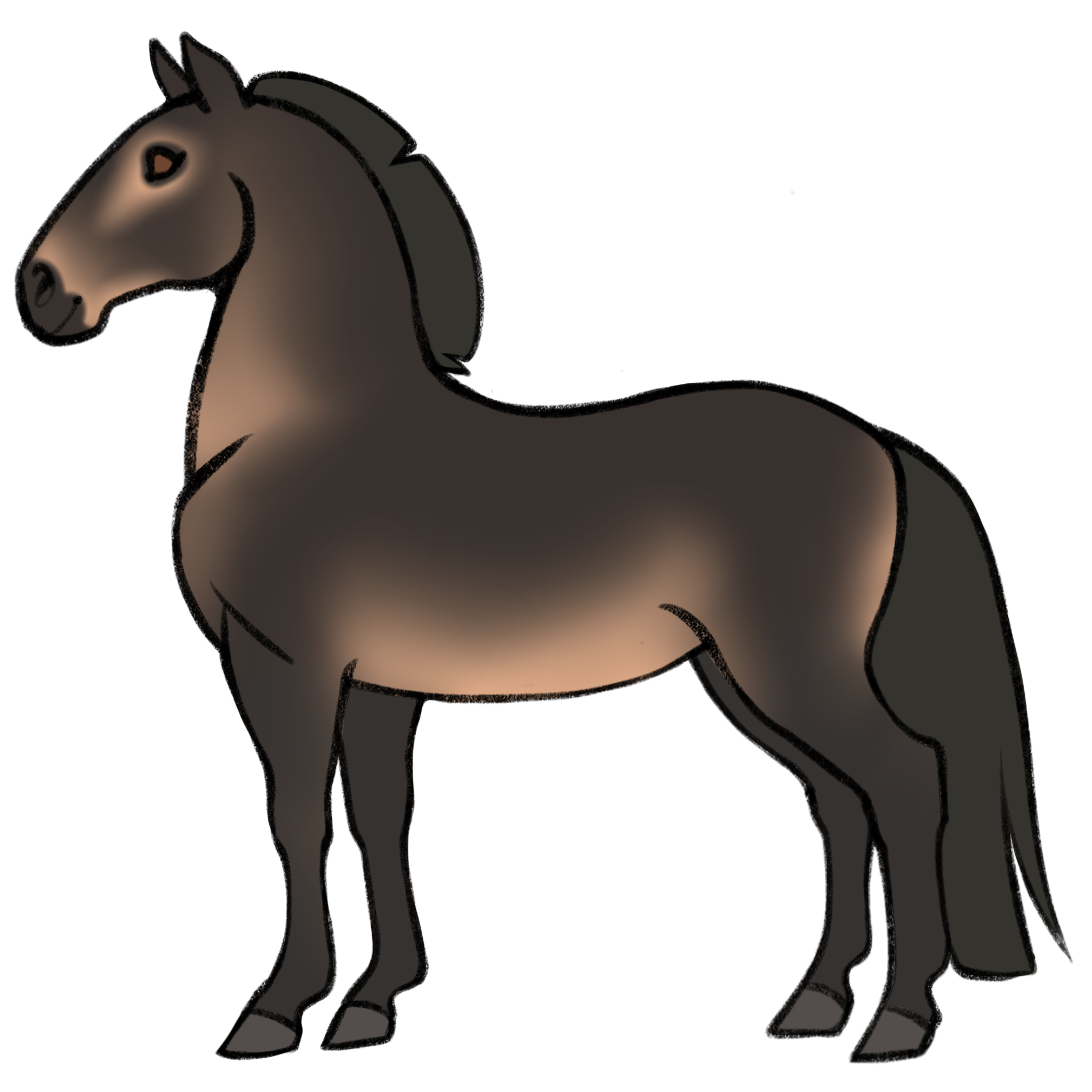
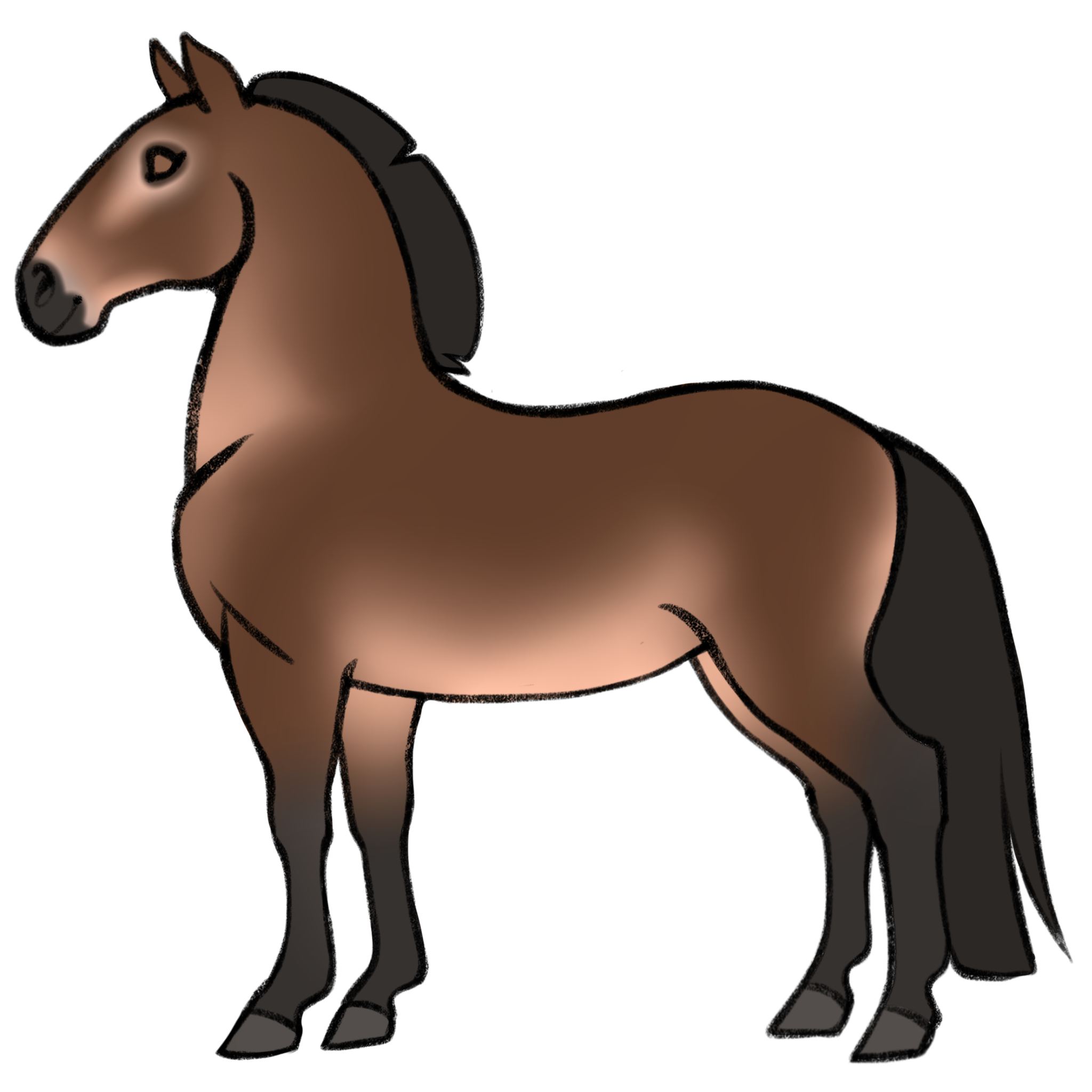
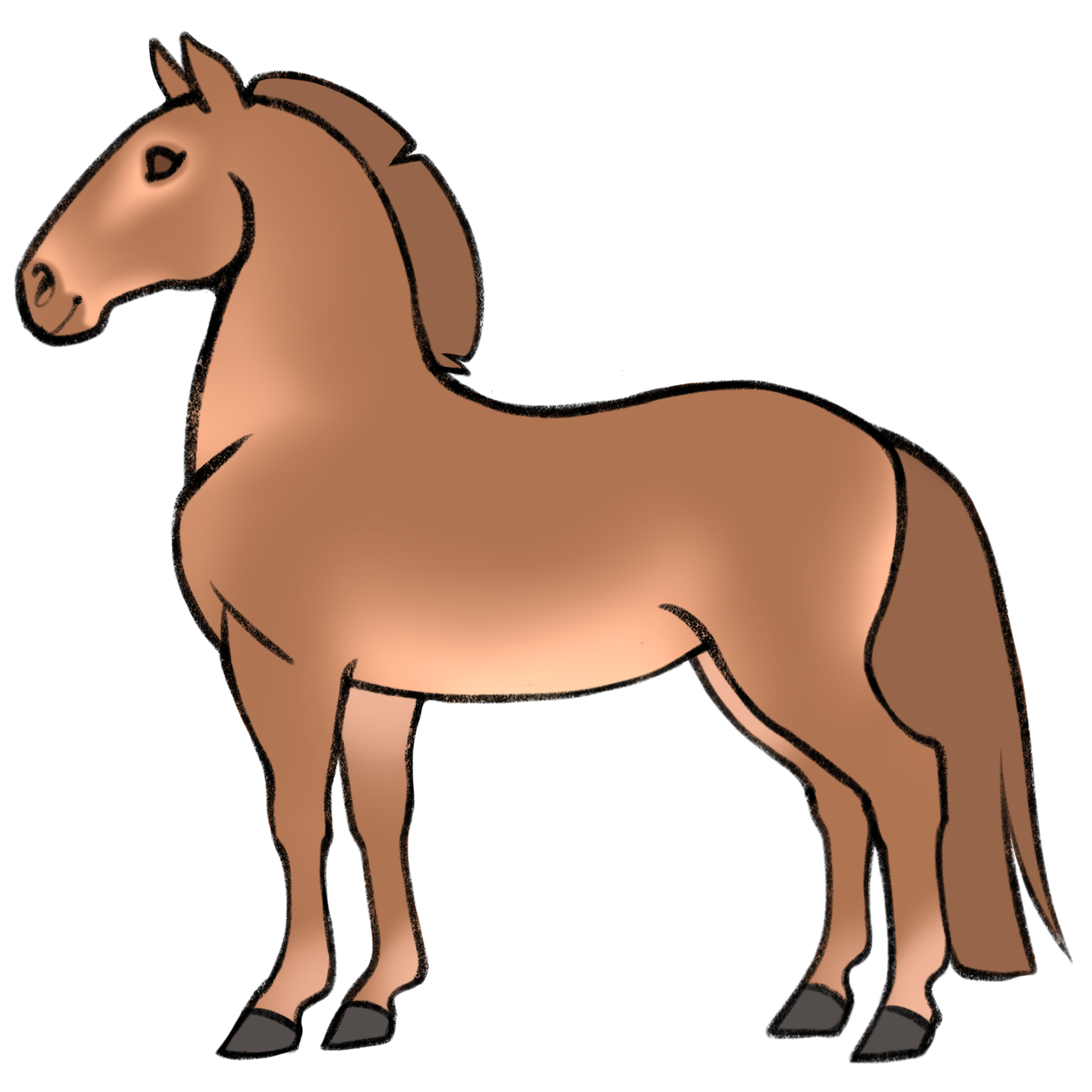
(GR_) grim (Uncommon)
Name: Grim
Base Genotype: GR_
Skin Color: If on a chestnut-base horse, the skin tone remains light. If on a black or bay-based horse, the skin tone becomes a dark blue-black.
Eyes: Causes brown eyes to become a medium grey. If the horse has blue eyes from a heavily diluted coat or a single blue eye from white patterns that touch the eye, they will remain blue. If the horse carries other eye color genes such as Arcane or Oracle eyes, those take precedence.
Description: Grim is a mutation originating in the Grimvelder breed, discovered by Jannick Grimvelt in Athelen. Grim causes black pigment to become a shade of dark blue, and red pigment to become warmed to a teal coloration. When the grim coat is diluted by genes such as cream, pearl, or champagne, many different coat colors are possible and range from rose, to mossy greens, to powder blues. The huge color range made possible by the Grim gene makes crossbreeding to Grimvelder horses highly desirable to some.
Design Guidance: At minimum, black horses may have a slightly blue tint. Bay and chestnut horses may appear as below, which is the most "middle of the road" expression- colors can range from slightly more saturated to slightly less saturated tones of blue and teal.
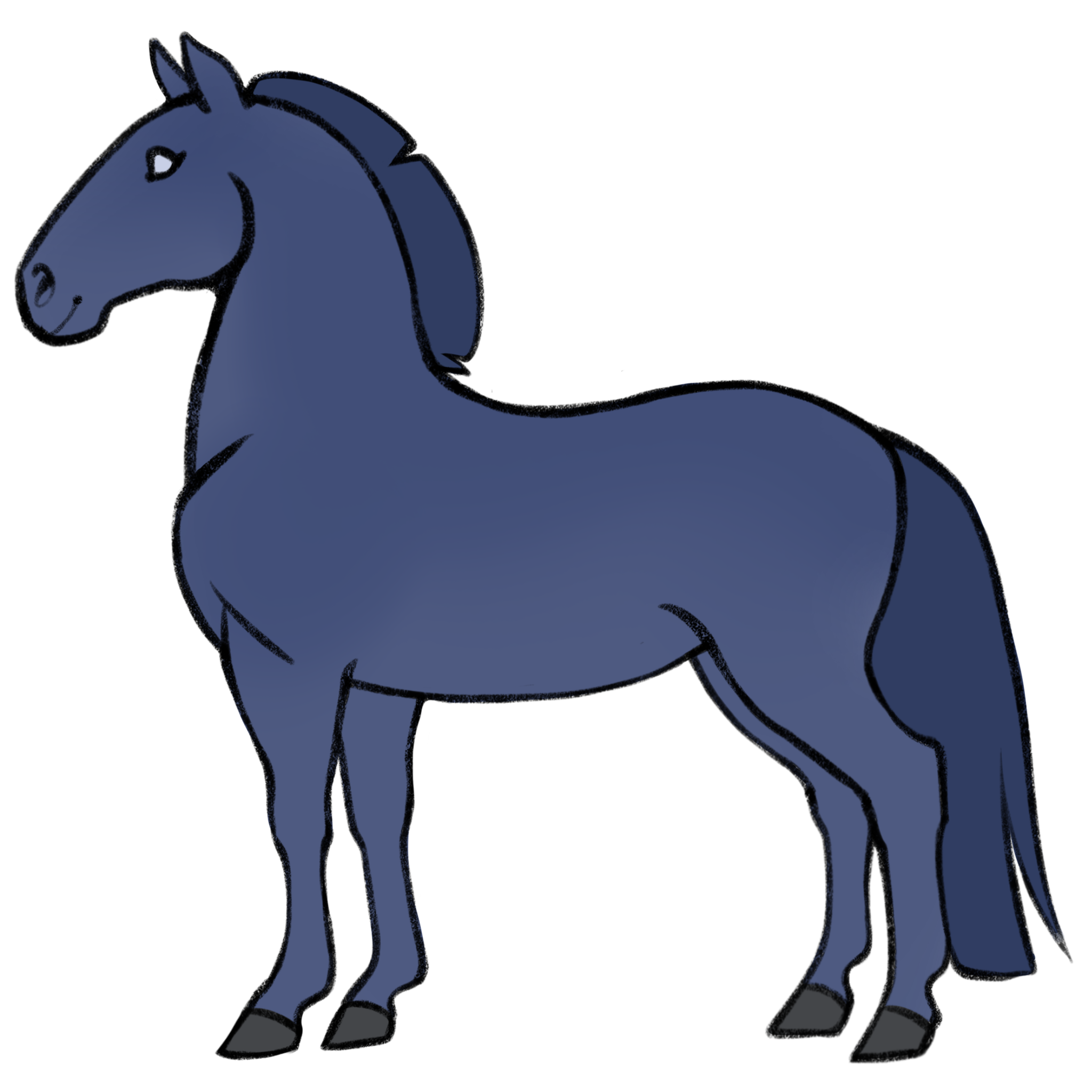
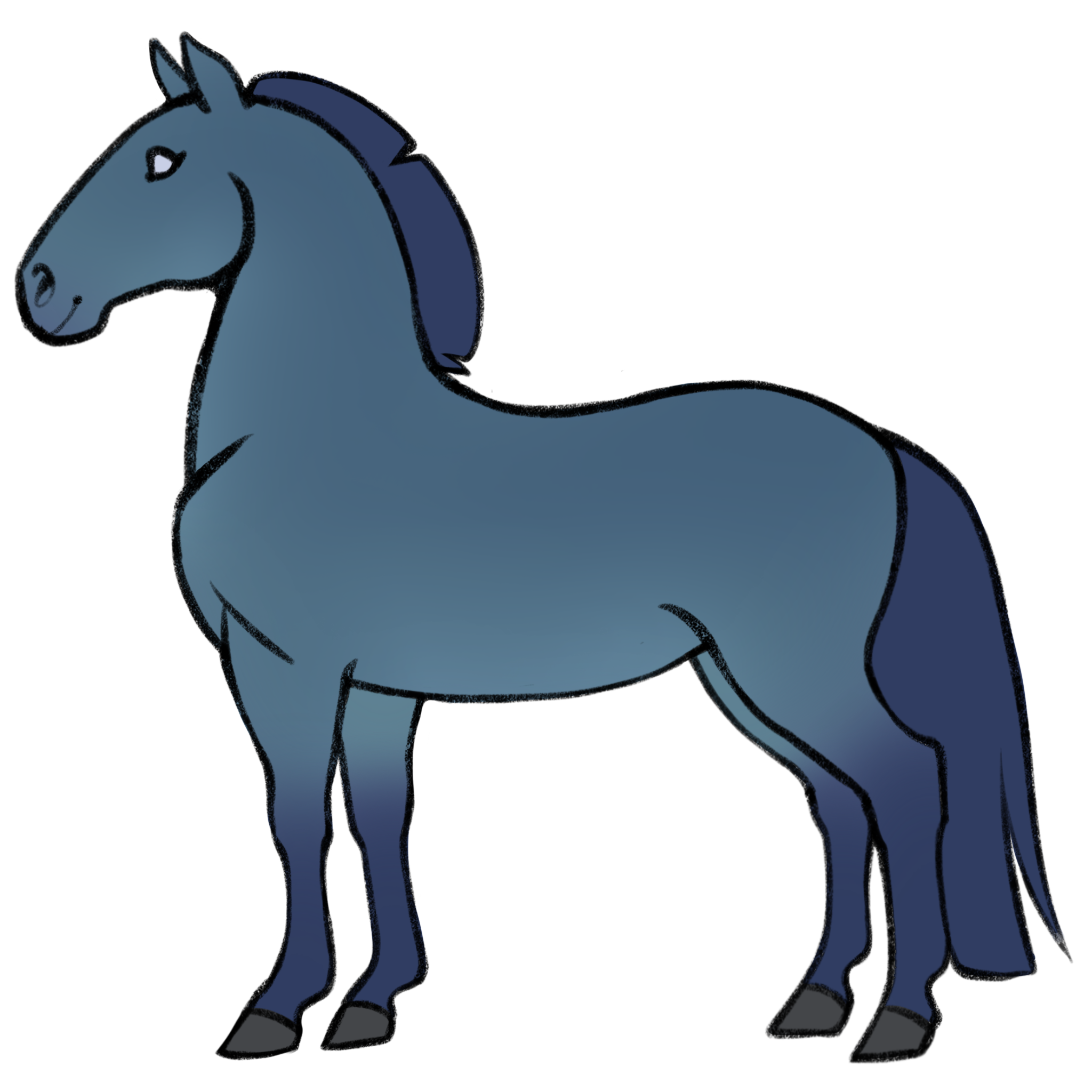

As a base coat, Grim interacts with all dilutions. For design purposes, this chart can assist in colorpicking:

(EM_) ember (Uncommon)
Name: Ember
Base Genotype: EM_
Skin Color: If on a chestnut-base horse, the skin tone remains light. If on a black or bay-based horse, the skin tone becomes a dark purple-black.
Eyes: Causes brown eyes to optionally become a light brown or honey color. If the horse has blue eyes from a heavily diluted coat or a single blue eye from white patterns that touch the eye, they will remain blue. If the horse carries other eye color genes such as Tiger eyes, those take precedence.
Description: Ember is a mutation discovered by the Sulaveri on the Plains of Lithia and is unique to bloodlines tracing back to Sulaveri Plainsrunners. Ember causes black pigment to become a shade of dark and warm purple, and red pigment to become saturated to intense reds and oranges. When the ember coat is diluted by genes such as cream, pearl, or champagne, many different coat colors are possible and may resemble anything from sunsets to fresh lemonade, depending on the combination. The huge color range made possible by the Ember gene makes crossbreeding to Sulaveri Plainsrunners highly desirable to some.
Design Guidance: At minimum, black horses may have a slightly purple tint. Bay and chestnut horses may appear as below, which is the most "middle of the road" expression- colors can range from slightly more saturated to slightly less saturated tones of orange, red, or purple.
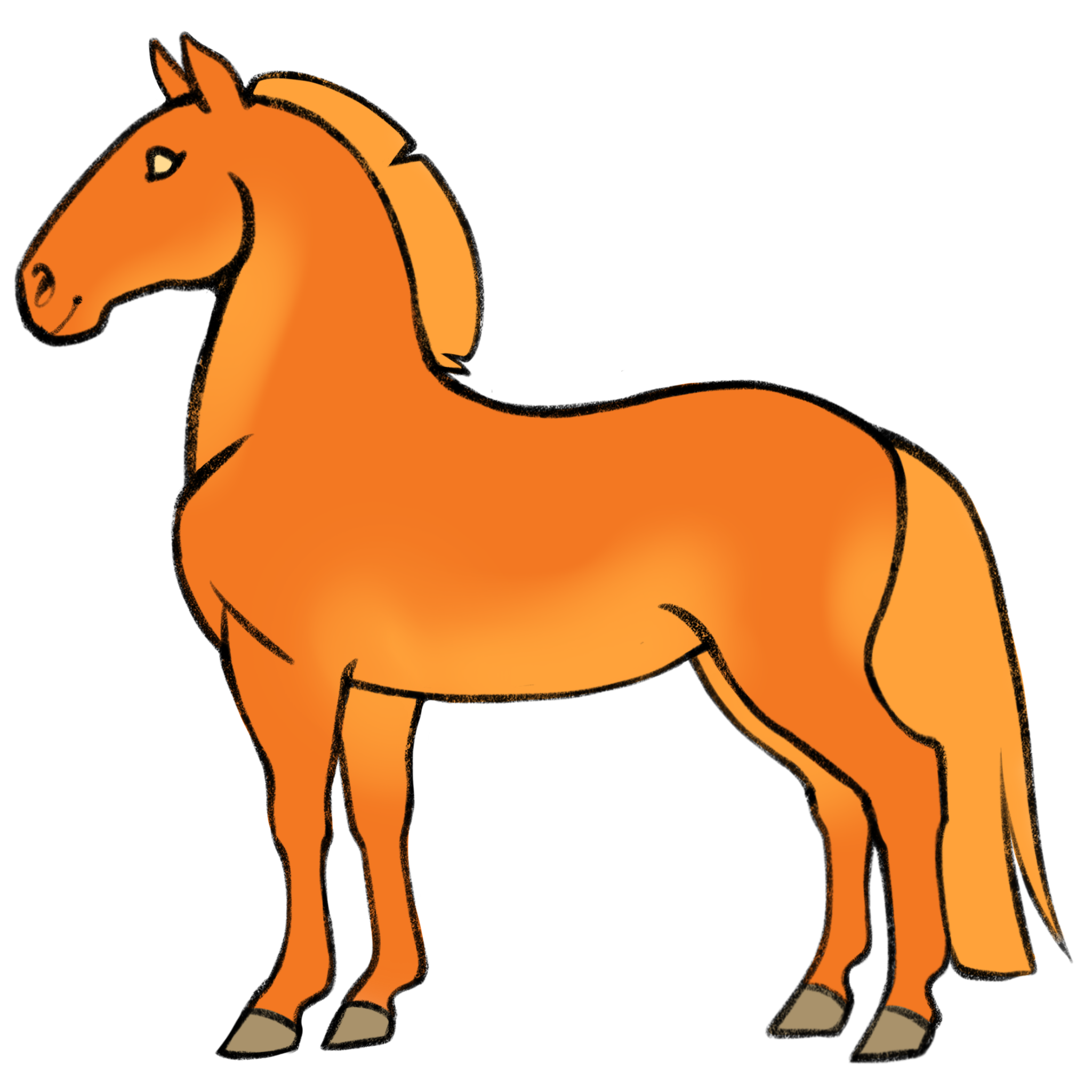
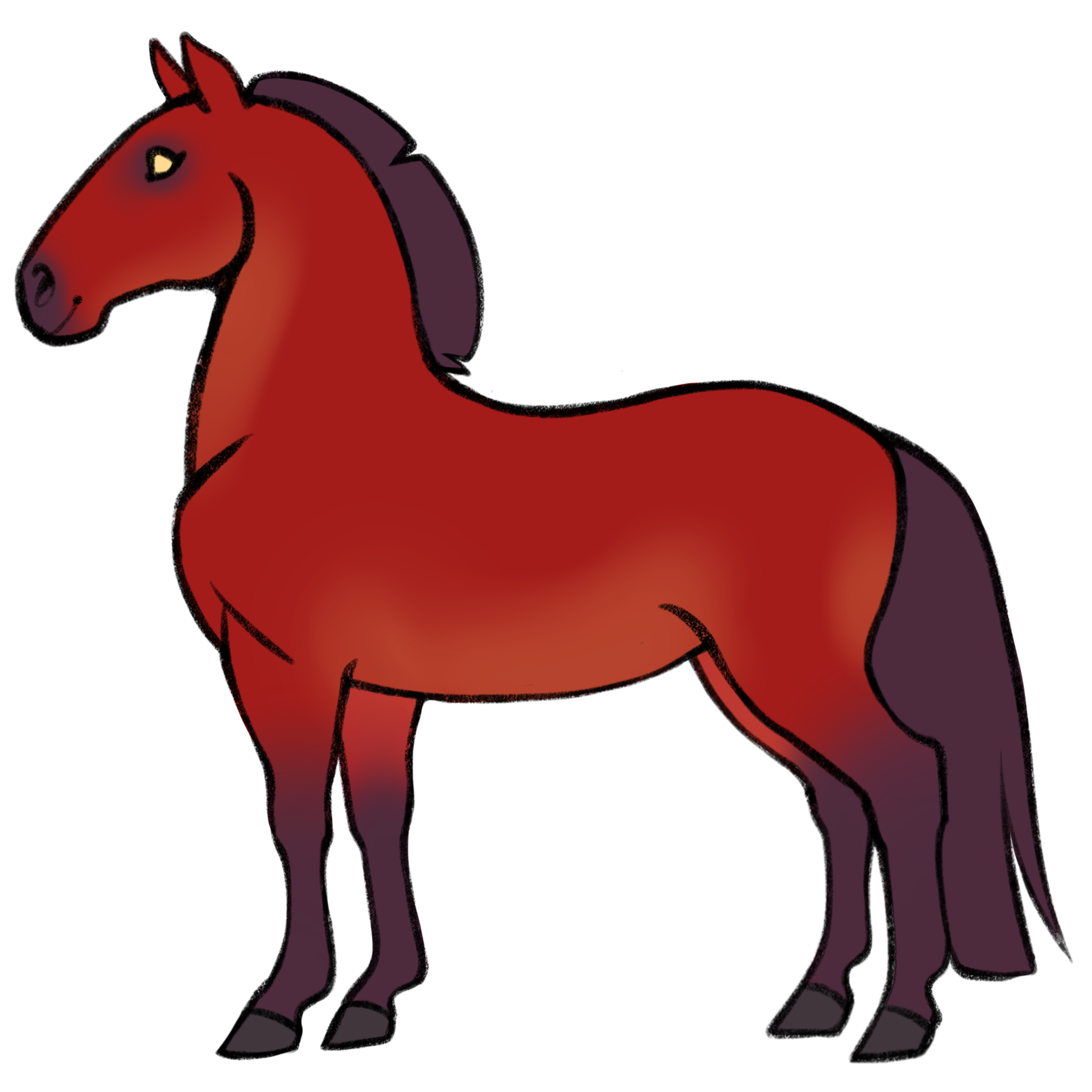

As a base coat, Ember interacts with all dilutions. For design purposes, this chart can assist in colorpicking:
